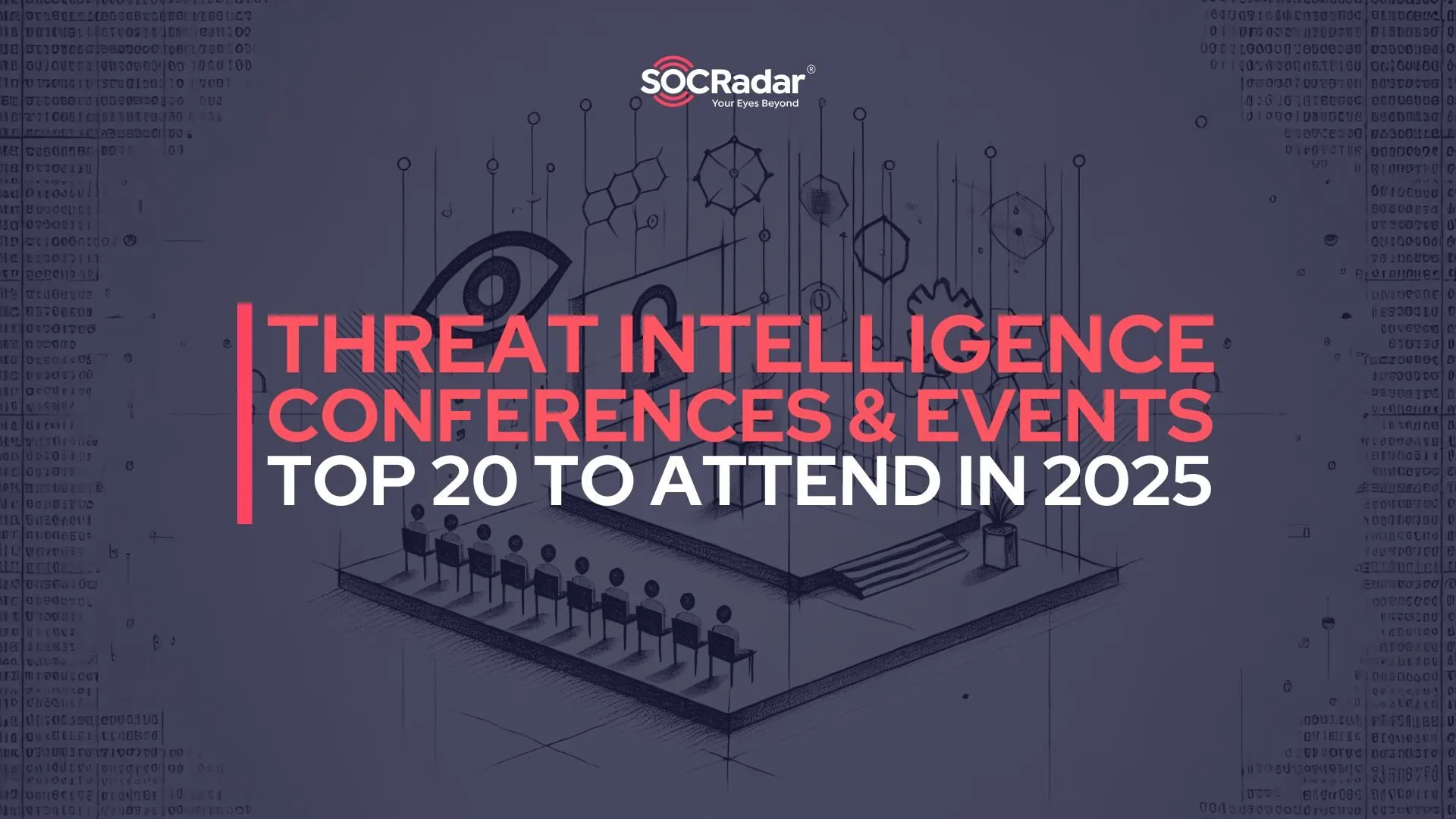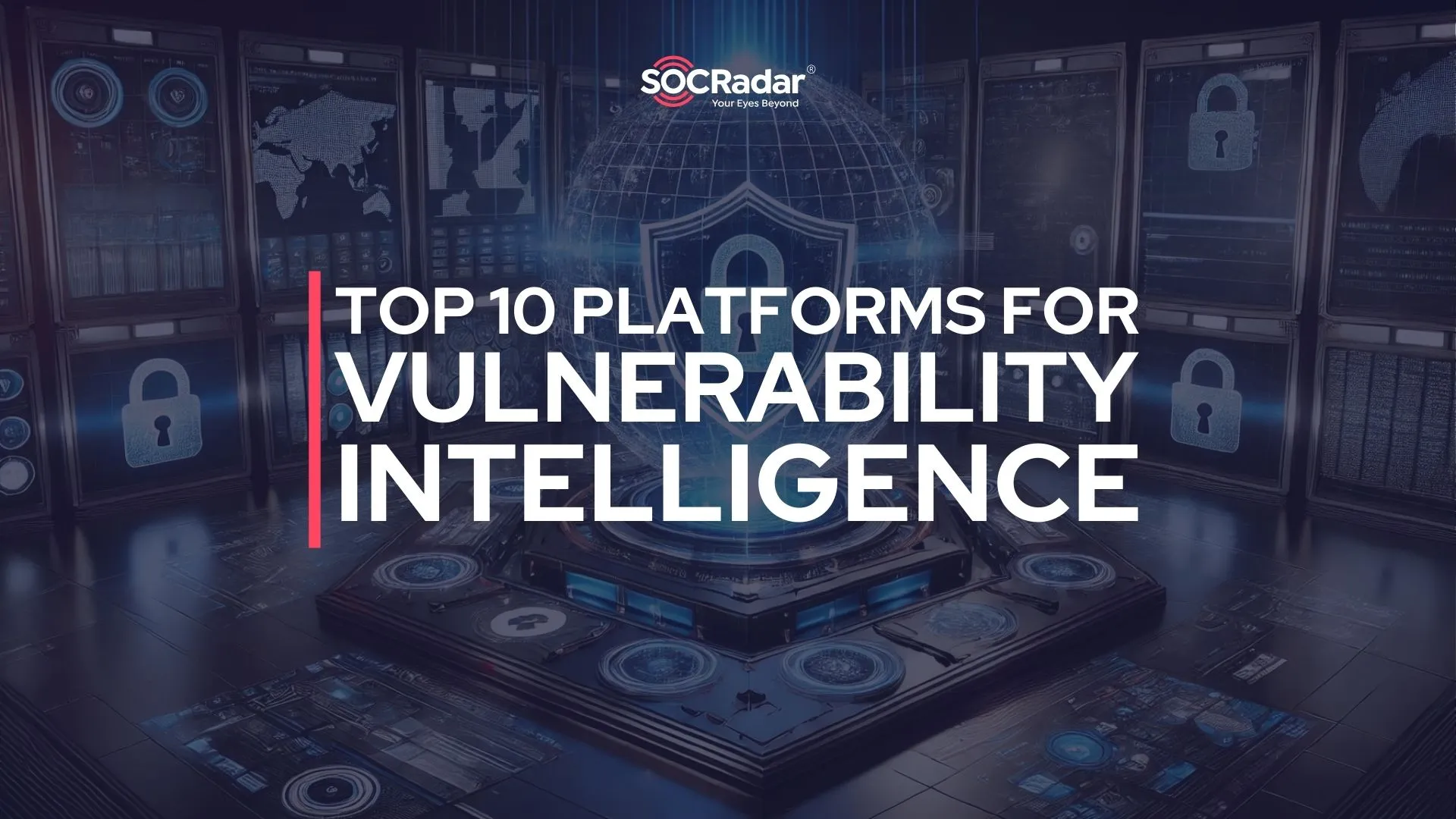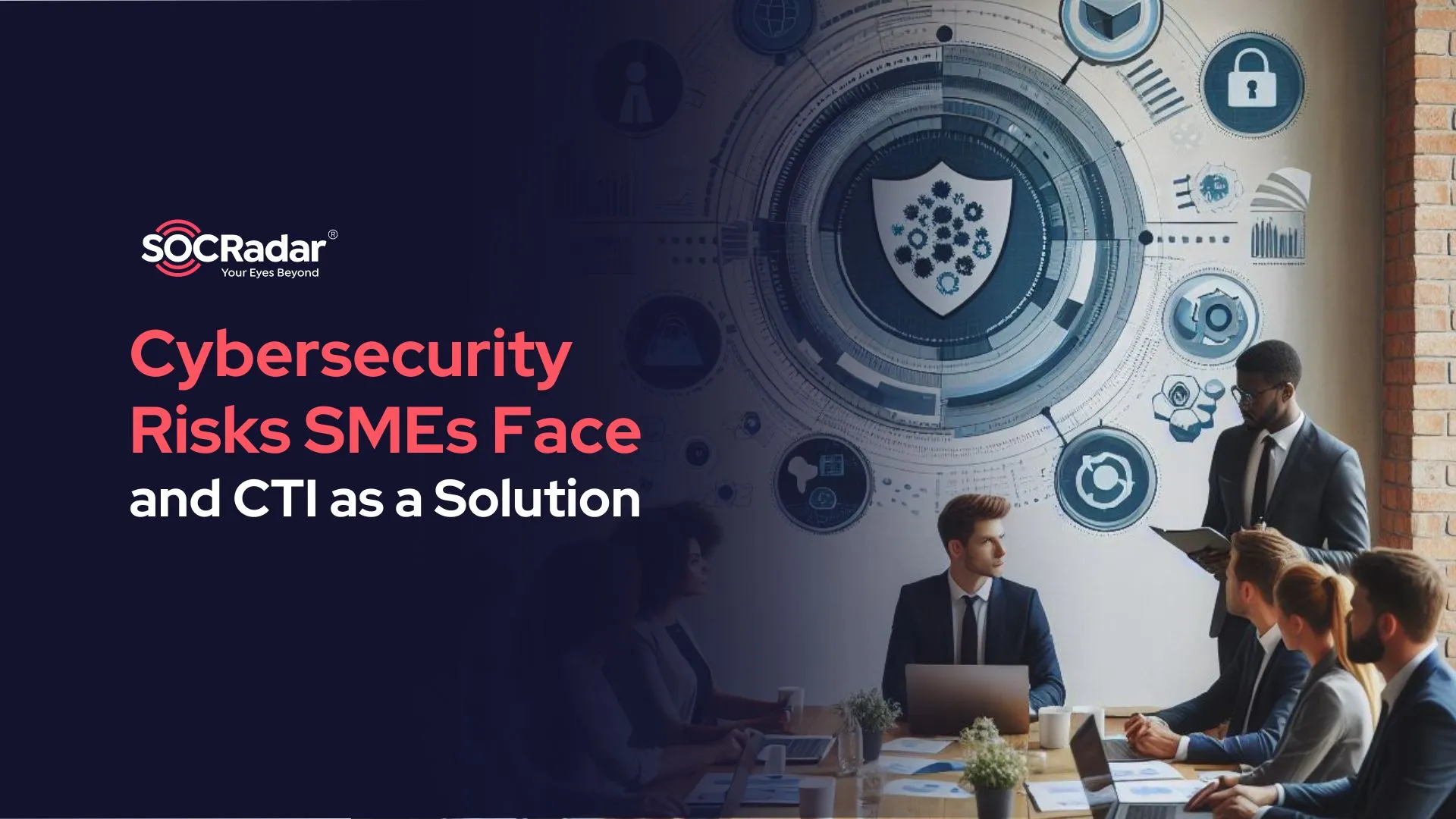
Biggest Cybersecurity Risks SMEs Face and CTI as a Solution
Small and Medium Enterprises (SMEs) can be considered the engine of their country’s economies. Their efforts result in economic growth. The competition they face in the market forces them to be innovative. Their financial fragility fosters agility, helping them seize opportunities in shifting markets.
These characteristics of SMEs have made them a crucial part of economies worldwide since they play a significant role in driving forward industries, fostering entrepreneurship, and creating job opportunities despite their small size.
Yet, their small and agile nature also comes with drawbacks. We can categorize these drawbacks into two groups.
General Overview of the Cybersecurity Risks for SMEs
SMEs are companies with revenues, assets, or employee counts below certain thresholds. Each country establishes its own criteria and thresholds for defining SMEs, but in general, these institutions have limited budgets.
The first category is related to economics and their financial situation. Their limited size and budget present obstacles to implementing the appropriate cybersecurity measures, such as employing and keeping the right talent or utilizing the necessary solutions. Despite taking up the most significant part of many countries’ ecosystems, SMEs are relatively small enterprises individually, and they are struggling to maintain a minimum level of cyber resilience, leaving them vulnerable to cyber threats. Because of their nature, the financial obstacles push them to get their security needs from other companies, and in a vast threat landscape, choosing the right service for their needs turns into an overwhelming adventure. This uncertainty increases the value of making informed decisions, thereby highlighting the importance of threat intelligence.
Economics is not the only problem for a resilient cybersecurity infrastructure when it comes to SMEs. Threats are also available for small businesses, and in fact, they are more impactful compared to big organizations. The second group is about cyber threats because SMEs are particularly vulnerable to these attacks due to their inherent characteristics.
Risks for SMEs Stemming from Financial Constraints
As the driving force of the economies worldwide, the biggest challenge SMEs face today is related to their financial limitations. SMEs often lack proper cybersecurity measures, leaving them vulnerable to other various cyber threats such as phishing attacks and ransomware incidents.
The financial limitations SMEs face often act as a magnifying glass, amplifying the risks posed by other cybersecurity threats to these institutions.
We can divide these financial constraints into two categories as well. Problems stemming from finding the right talents and difficulties arising from being unable to utilize the necessary cybersecurity solutions due to their cost.
According to the report from the World Economic Forum (WEF), Latin America and Africa have the least amount of organizations that are cyber-resilient. In the meantime, North America and Europe reported the highest numbers. This shows that the general financial situation and development metrics also apply to cybersecurity.
Finding the Right Talent
The importance of cybersecurity talent doesn’t need much explanation. Their expertise is indispensable in securing critical data and systems. However, finding the right talent is a real challenge for organizations for various reasons. Some of these challenges originate from independent sources and are not related to the organizations, such as the skills gap or the imbalance between supply and demand.
Since cybersecurity is a field that is constantly evolving, a gap is continually widening between the skills required by organizations and the skills possessed by employees. Cybersecurity professionals are forced to continuously update their skills to keep up with new threats and techniques. The same WEF research reports that only 15% of all organizations, including high-revenue institutions, are positive about the improvement of cyber skills in the next two years, and 78% of respondents lack the skills in their organizations to achieve their cybersecurity goals.
Another shortcoming is related to the lack of talent in the field. The demand for cybersecurity professionals is increasing every day, exceeding the existing supply. This leads to competition between organizations for qualified candidates. When it comes to SMEs, they are on the disadvantaged side in this competitive market of attracting top talent. According to WEF, when asked if they have the skills needed to achieve their cybersecurity objectives, high and medium-revenue organizations’ answers didn’t change much from 2022 to 2024. It dropped to 82% from 88%. At the same time, low-revenue organizations’ capabilities dropped to 49% in 2024 from 94% in 2022.
Other than these two problems originating from outside of organizations, the third and the main problem related to finding the right talent comes from budget issues within the organizations.
A report shared by ICS2 back in 2023 creates an approximate and general image of the hardships related to the financial problems organizations face when it comes to using their budgets efficiently. One part of the report talks explicitly about staff shortages. According to the report, 34% of respondents said a lack of budget is the most significant cause of staffing shortages. It is stated that the same number was 29% back in 2022.
While the inability to attract talent is a problem, and not having the necessary resources to employ the correct skills is a substantial hindering factor for organizations, and especially SMEs, the overall picture for the whole ecosystem is more problematic. While organizations with the necessary means can get skilled workers and protect their own infrastructure, companies they work with will stay in the open as threats. Sharing the same platforms, communicating via emails, sending and receiving files, utilizing API keys, accessing the same databases, and many other collaborative work to run the businesses will keep these organizations in contact with each other. And if the environment you are in is not secure, you are not safe either.
If you want to make sure that the partners you are working with are secure, visit SOCRadar’s Threat Hunting Tool to detect vulnerabilities in your environment.
Cost of Cybersecurity Solutions
Financial limitations SMEs face with not only create obstacles to hiring the right talent but also block organizations from obtaining the necessary cybersecurity solutions. As we stated earlier, the cybersecurity field is evolving constantly, requiring different solutions to be developed for the vast threat landscape. Since the talent behind these solutions is rare, the cost of services is really high as well, making it harder to obtain these solutions.
On average, companies worldwide allocate at least 12 percent of their IT budget to information security, according to Statista. While allocating such a budget is impossible or extremely hard for certain institutions, the financial or reputational impacts of cyber attacks due to lack of resources are detrimental. As a result, SMEs are caught in the middle between being exposed to threats and spending significant portions of their budget on necessary solutions.
Another thing to keep in mind is the cybersecurity solutions you would need to employ to secure your environment. According to the WEF report, the majority of institutions lack visibility when it comes to their partners in their ecosystem. If you don’t use the necessary tools to protect your environment and only focus on your own organization, threat actors can leverage others in your sphere to reach out to you.
But with the help of SOCRadar Extended Threat Intelligence, you can also learn about your partners and secure your environment.
Risks for SMEs Originating from Cyber Threats
The impact of cyber threats not only results in disruptions to business operations, loss of productivity, and costly recovery efforts but also hurts the company’s reputation, damages customer trust, and might limit further cooperation possibilities with other businesses.
The threat landscape is vast, and SMEs may face various problems. Phishing attempts, data breaches, spyware, ransomware, insider threats, third-party risks, and the security of IoT devices are just some of the risks. However, when it comes to SMEs, the two biggest threats to look out for are phishing attempts and ransomware attacks.
The reasoning behind these two attacks is simple. Phishing attempts are widespread and have destructive impacts. At the same time, ransomware attacks mainly target small organizations.
Phishing Attempts
A phishing attack is basically a type of cyber attack in which threat actors use different techniques to trick individuals into providing personal data such as usernames, passwords, credit card numbers, or other information. They can utilize fake emails, websites, phone numbers, or other means to hide the attacker’s real identity.
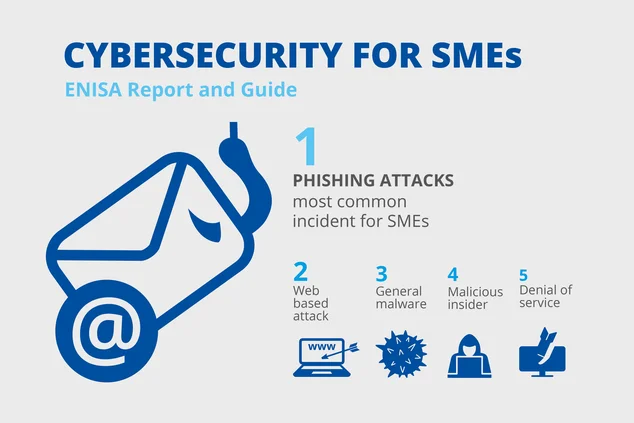
According to the European Union Agency for Cybersecurity (ENISA), phishing attacks are the most common incident for SMEs
Attackers can gain authorization on the victim’s systems after the phishing attack is successful. This will allow threat actors to steal data or money, disrupt business operations, or they can use this opportunity for other purposes.
In order to prevent this, organizations should take necessary precautions, one of them being filtering fake domains. Using fake websites and login screens to lure employees to give away their credentials is very common.
You can learn about these fake domains with the help of SOCRadar’s Phishing Domain Detection Solution and detect suspicious domains to protect your organization or you can also utilize Email Threat Analyzer to dismiss malicious emails.
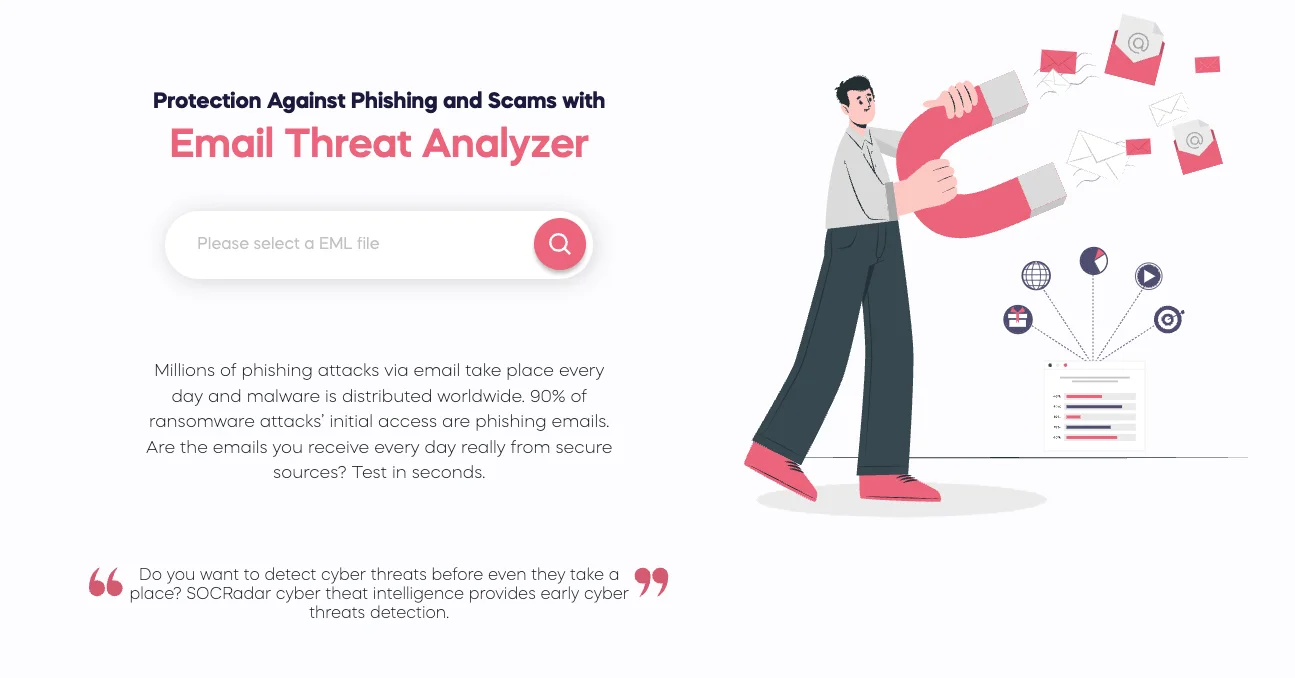
SOCRadar’s Email Threat Analyzer will help you catch malicious emails
Ransomware Attacks
When a ransomware attack occurs, the threat actor controls the victim’s system and encrypts their files, preventing the victim from accessing their data. Then, the attacker demands a ransom to decrypt the system. While phishing attacks are common ways to introduce malware into a victim’s system, many other ways such as vulnerabilities in those systems, can also be utilized.
To determine which assets you utilize have vulnerabilities, check SOCRadar’s Vulnerability Intelligence Tool.
In terms of SMEs, the impacts of ransomware attacks are critical. In the research conducted by ENISA on SMEs, 57% of the organizations said they would most likely go out of business if a cybersecurity incident occurred. While this statistic is about any cybersecurity incident, considering the ransom requested by threat actors will definitely increase that percentage since paying that ransom would put an extra burden on many organizations.
For SMEs to protect themselves from such attacks, there are various strategies that they can employ. Some of these strategies are employee training, endpoint protection solutions, and data backups.
Educating employees about various cybersecurity risks and constantly monitoring them is one of the best ways to protect your organization since humans are the weakest links but it is not enough. You should still employ the necessary means to protect your organization.
Using endpoint protection solutions is another thing to consider. These tools monitor each endpoint in your system and detect suspicious activities, malware, or other threats in real time. By leveraging advanced detection algorithms and threat intelligence, they provide proactive defense mechanisms to stop potential cyberattacks and ensure the security of your network infrastructure.

Our Attack Surface Management module scans our users’ assets, detecting the security vulnerabilities exploited by ransomware groups, and presents the findings
And finally, another essential step to take against ransomware attacks is having a backup. Backup data of your original operations will help you save your valuable assets in times of crisis. When threat actors encrypt your data, you can use your backup to mitigate the impact of a ransomware attack.
Solutions from SOCRadar
When it comes to dealing with threats and maintaining security, it is crucial to know what you are dealing with. That’s why intelligence is a vital part of security. And this story doesn’t change in cyberspace either.
We saw how hard it is for SMEs to manage their budget to mitigate risks. They have no dimes to waste. That’s why a comprehensive solution like SOCRadar Extended Threat Intelligence can be handy for SMEs needs.
SOCRadar XTI offers numerous tools under three modules. Cyber Threat Intelligence, Attack Surface Management, and Brand Protection modules let you take care of all of your intelligence needs from one source. You can track threat actor’s activities to find out if they plan to attack you, protect your organization and all of your environment to see if there are unusual activities, you can learn about the latest vulnerabilities that might affect your business, and use many other tools just from one point.
































